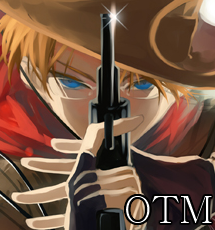Post by The Game Master on Apr 15, 2013 18:33:14 GMT -8
Doppelgängers
An amorphous creature borne out of an animator’s magic gone awry. Doppelgängers typically manifest in toys—mostly dolls—whose animated abilities doesn’t wear off after the magic expires. They will accompany their owner as any animated toy usually would, and even once their owner outgrows toys, nothing unusual occurs as long as it is given away to another child. Though this does not always occur, the malicious properties of the doppelgänger manifest when it is abandoned before it considers its purpose “fulfilled,” at which point it becomes tormented by feelings of isolation and alienation. Through means unknown, they manage to project a larger, human-sized version of themselves through which they may act.
At this stage, the doppelgänger still resembles its original form and is the easiest to distinguish. Once the doppelgänger comes into contact with humans, however, it may begin to imitate the features of the people it’s met. They cannot manifest features of their own, and may only put together their form through duplicating those of others, rather like a puzzle. It takes several days to change their image completely, though individual features may undergo a quicker transformation.
In the beginning, doppelgängers usually target children for their naiveté. They will befriend the child, and invite them someplace isolated to play, usually far away from parents or adults. Orphaned children or children from troubled families are usually not targeted. Throughout this time period, the doppelgänger will mostly be amiable, if quick to anger when the child refuses to cooperate. Its ultimate goal is to spend enough time with the child that it can come to look exactly like its victim. This process may take anywhere from one week to one month, so parents must beware if their children are suddenly disappearing to play with a friend who they will not introduce, nor speak of. As the child usually becomes frightened when the doppelgänger begins to physically resemble him or herself, and may begin to protest or attempt to run away from the doppelgänger, they may arrive home with injuries typically used by the doppelgänger as a threat to ensure obedience. If the doppelgänger suspects that the child will disobey, regardless of physical threats, it may attempt to keep the child at its side by force. Even in this case, the child will not be killed, as the doppelgänger cannot replicate the dead; however, restraining and even maiming are not unheard of.
Once the doppelgänger has fully achieved the physical appearance of its target, it will kill the victim and proceed to attempt to take the victim’s place in life. Driven by feelings of abandonment, it will strive to feel loved and cherished by those who surround them, but as it is unable to reproduce its target’s personality, the people who knew the victim might feel increasingly uncomfortable and intimidated by the new behaviors of the doppelgänger. The doppelgänger will be avoided by those in it met in its new life, and the feelings of isolation and loneliness will increase. At this point, the doppelgänger might leave its surroundings and try to move on until it finds another target whose situation in life it covets. Other doppelgängers might be driven to violence by the avoidance and kill some, or all, of those with whom it had associated, then attempt to find another life that may be more welcoming.
However, regardless of in how happy the situation the doppelgänger finds itself, it will continually be driven by emotions of abandonment, jealousy, and paranoia. Even among a group of people that accepts it under its stolen identity, it will come under the impression that they are leaving, or will leave it, at which point the process of leave or kill repeats. In the intermediate period between each target, the doppelgänger tends to wander around, and adopts the features it finds desirable in people it meets. These feelings on part of the dopplegänger should not be mistaken for sentience—they are, at the very core, toys driven by an intense desire for vengeance.
A doppelgänger’s most vulnerable moment is during the time it is targeting its first victim. It is visibly distinguishable from a human, and thus it is the easiest time to discover and execute it. Once its amorphous powers enable it to adapt to features from various people, they are much harder to distinguish from the average human. Many people have tried to get rid of a toy that lives past its magical animation (ie: by shredding or burning it) but trying to do so might incur its wrath and, in the attempt to deny it the possibility of becoming a doppelgänger, have it become one.
Physically, doppelgängers are slightly stronger and faster than the average human, and they do not bleed when cut. They do not breathe, eat, drink, and neither do they have a heartbeat—in fact, the interior of the doppelgänger has been discovered to usually be composed of wood or stuffing. They also have full regenerative abilities, although dismemberment or extensive injury can incapacitate them for prolonged periods of time. As long as the dopplegänger’s original form—the toy—is intact, the doppelgänger is virtually indestructible, but any damage done to its original body will be reflected on its current form. Its true body will never be too far from the subject, as doppelgängers can only operate within a limited scope in relation to its source. The further it is from its source, the weaker it becomes, and it is at its most powerful in close quarters to its original form.












